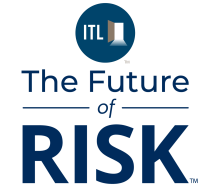Electrical fires remain one of the most significant hazards to homes and businesses, causing approximately 51,000 fires annually in the U.S. and resulting in over $1.3 billion in property damage. Despite the frequency and severity of these incidents, many policyholders misunderstand how these fires start and what puts them at risk. These misconceptions can leave homes and lives exposed, making it crucial for insurance professionals to provide accurate information and resources.
Myth #1: "GFCIs and circuit breakers catch all electrical problems."
While circuit breakers and GFCIs are critical for home safety, they are not infallible. Most homes are equipped with GFCIs, AFCIs, and conventional breakers, but very few electrical fires would occur if these devices truly caught every fire hazard. Unfortunately, these devices are primarily designed to detect sudden surges and short circuits, not the slower, hidden electrical faults that often spark fires.
Data from the U.S. Fire Administration shows that electrical fires are increasing in frequency, underscoring the limitations of these safety devices. These fires often originate from micro-arcing, aging connections, and other low-level faults that do not trigger GFCIs, AFCIs, or breakers. Many of these hazards quietly build up behind walls and within appliances, making them even more insidious.
Key Takeaway:
Educate policyholders about the limits of their safety devices. Stress that GFCIs and circuit breakers are only part of a complete safety strategy. They are not a substitute for regular inspections and safe usage.
Myth #2: "New homes don't have electrical fire risks."
Many homeowners believe electrical fires are an issue only in older buildings with aging infrastructure. In reality, newer homes face electrical fire hazards, too—often due to improperly installed wiring, manufacturing defects in modern appliances, or the surge in electrical loads from today's technology.
Ting data reveals that 30% of electrical fire hazards originate in devices and appliances within the home itself, regardless of the building's age. Further, 30% of these hazards are caused by dangerous power conditions from the electric utility company, which are also largely independent of home age. This underscores that even newly built homes aren't immune to these threats.
Key Takeaway:
Policyholders need to understand that no matter how new their home is, proper inspections and safe practices are essential. Encourage them to schedule professional electrical evaluations and avoid overloading circuits.
Myth #3: "I'll see or smell signs of an electrical problem before a fire starts."
It's true that some electrical fire hazards may be accompanied by flickering lights, electrical burning odors, or even audible arcing sounds. Homeowners should always take these warning signs seriously, as they could indicate a dangerous condition that might be caught early.
If homeowners sense these warning signs, they should take immediate action to de-energize the affected circuits and call a qualified electrician to address the problem. However, these signs are often hard to detect, especially when electrical faults are developing behind walls or inside appliances. Because these early clues are so subtle or hidden, many electrical fires occur without any obvious warnings. Homeowners can't rely on these signs alone to keep their families and property safe.
Key Takeaway:
Help policyholders understand that waiting for visible signs is a dangerous gamble. Early detection tools, like smart sensors and professional monitoring, can catch these hidden hazards before they escalate. For instance, the Ting sensor and service detect the vast majority of electrical fire hazards and prevent over 80% of electrical fires that would otherwise occur. This advanced technology provides an additional layer of protection that homeowners can trust, significantly reducing risk and providing peace of mind for both policyholders and insurers.
Final Thoughts
Electrical fires pose a continuing threat, but by debunking these three misconceptions and emphasizing detection tools, insurers can help policyholders reduce risk, prevent costly claims, and create safer homes.






